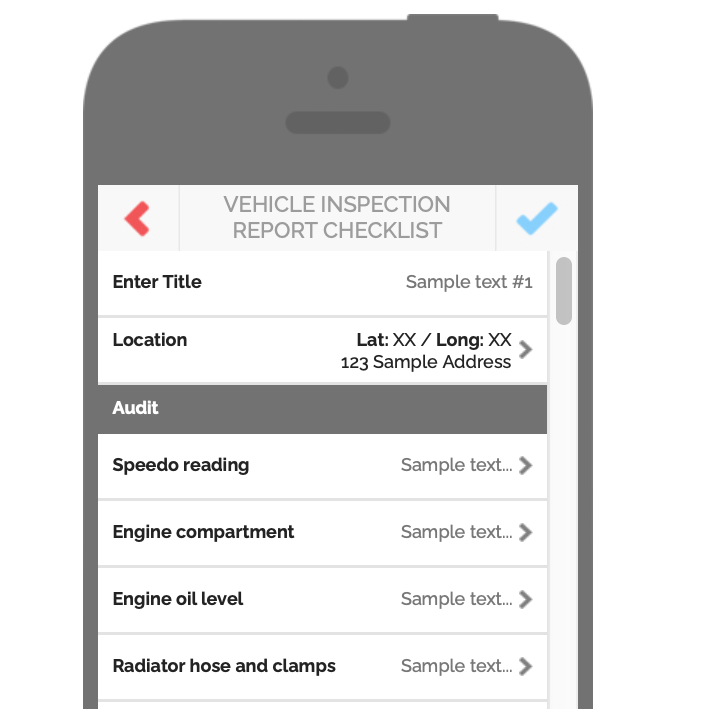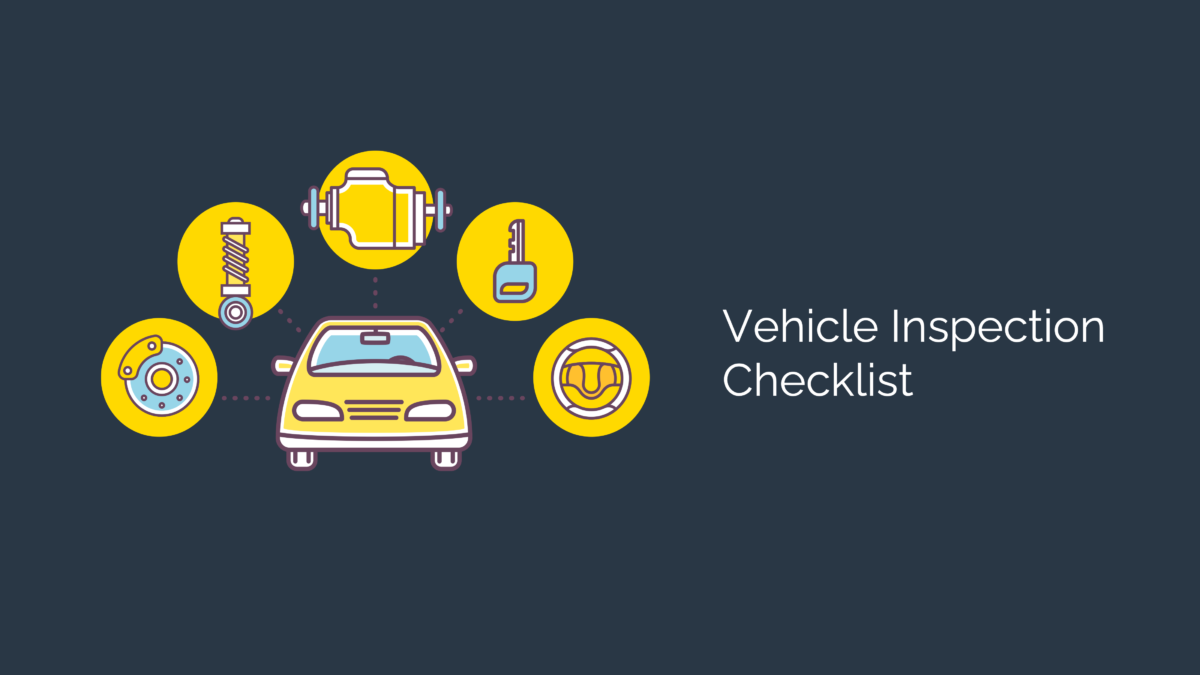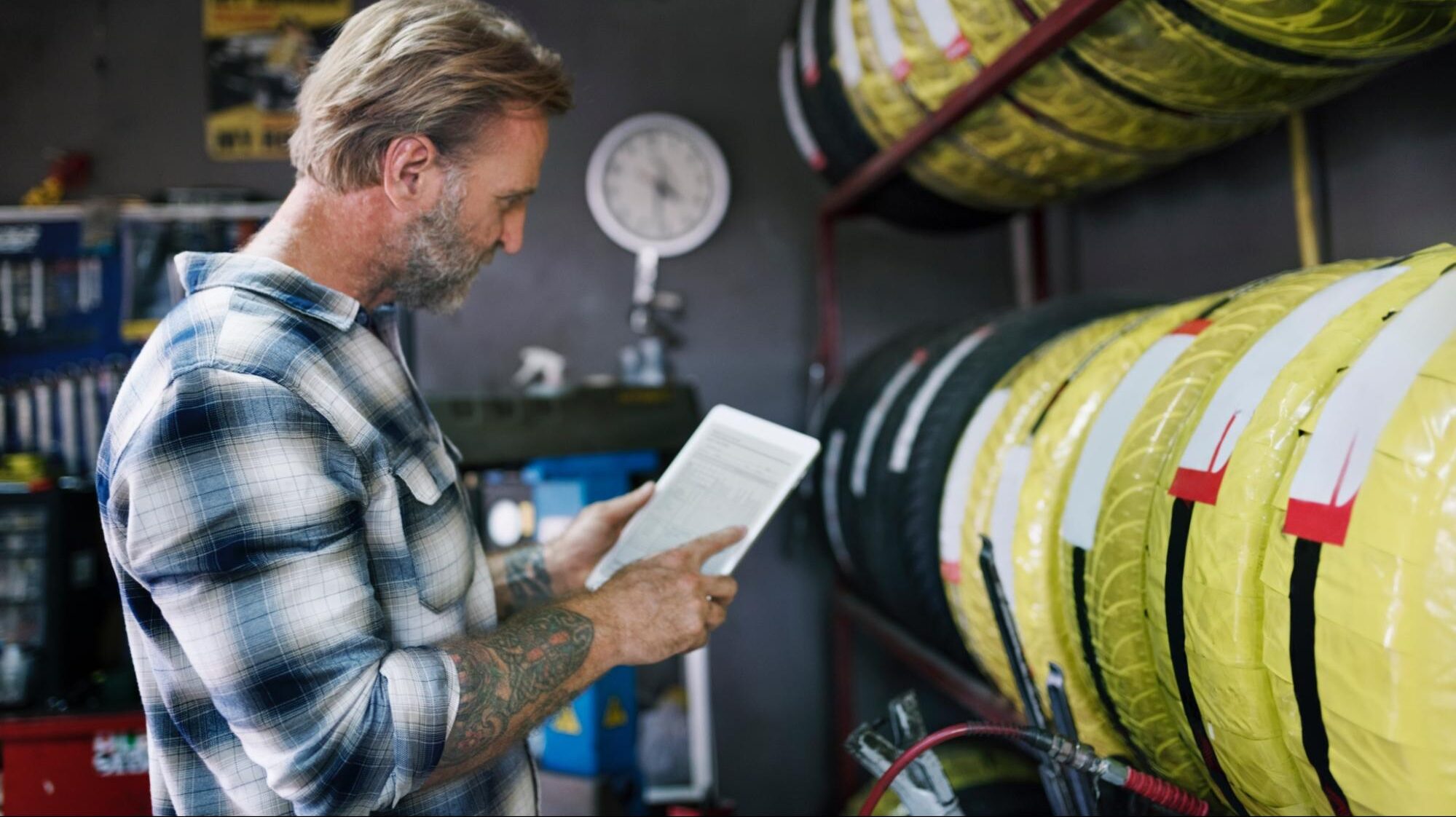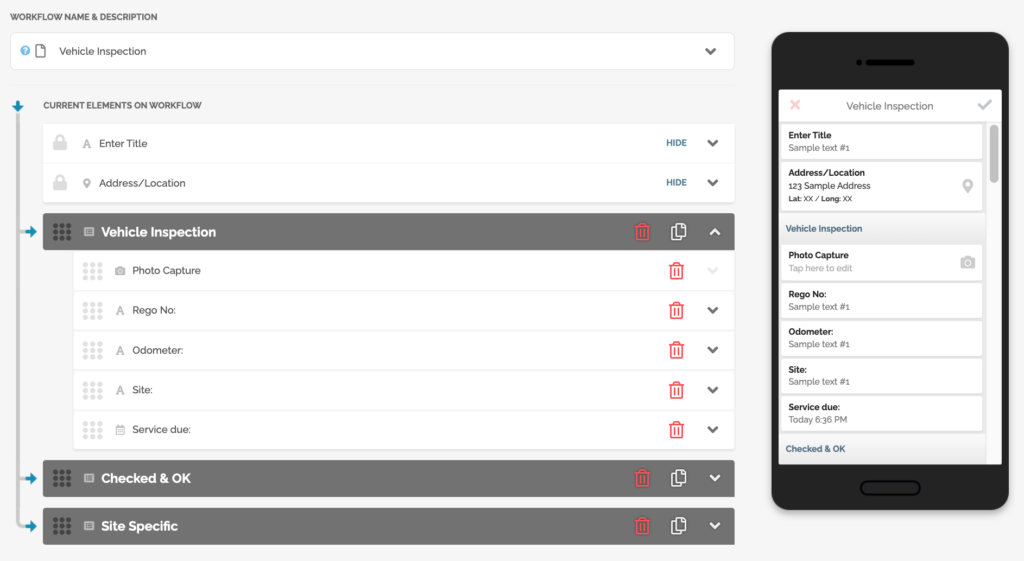Maintaining a fleet of vehicles is a critical part of any business operation. Not only do vehicles need to be in good working order to transport goods and personnel, but they also need to meet safety standards. That’s why a vehicle inspection checklist is necessary.
Fleet inspection is an important part of the supply chain because it helps to ensure that vehicles are in good working order and meet safety standards. This, in turn, helps to keep the supply chain running smoothly.
Vehicle problems can cause delays and disruptions in sales and operations, which can have a ripple effect throughout the entire system.
This article will provide an overview of vehicle inspection checklists, including what they are and why they are used. Additionally, we will offer tips on how to create and use a checklist effectively.
Table of Contents:
I. What is Vehicle Inspection
II. 5 Benefits of Vehicle Inspection Checklist
III. 7 Common Items Included on a Vehicle Inspection Checklist
IV. How to Use a Vehicle Inspection Checklist
What is a Vehicle Inspection Checklist
A vehicle inspection checklist is a tool used by inspection personnel to ensure that all vehicle-related tasks are completed in a timely and efficient manner. The checklist typically includes a series of questions or prompts that the inspector must answer or complete, as well as a space for notes and comments.
The checklist can be used to track the progress of an inspection, identify areas that need improvement, and ensure that all standards are met.
5 Benefits of Vehicle Inspection Checklist
There are a number of reasons why businesses should use vehicle inspection checklists. Some of the key benefits include:
1.Ensuring that all necessary vehicle maintenance tasks are completed in a timely and efficient manner
Vehicle maintenance is important to prolonging the lifespan of your car. Yet, many people do not know how to properly maintain their car. This is where a Vehicle Inspection Checklist comes in handy.
The Vehicle Inspection Checklist is a workflow tool that helps individuals keep track of the status of their car. It allows you to see what needs to be done in order to maintain your car and prevents you from overlooking any critical steps.
For example, let’s say you need to change your oil every 5000 miles. The Vehicle Inspection Checklist would remind you when it is time to change your oil based on the current mileage on your car. This simple reminder can save you a lot of money and frustration in the long run.
2. Identifying areas that need improvement
Vehicle inspection checklists can also help to improve the efficiency of fleet operations by identifying opportunities for cost savings. For example, if a vehicle inspection checklist reveals that a particular vehicle is consistently low on fuel, the fleet manager may be able to implement a fuel-saving strategy such as using a different route or scheduling fill-ups during periods of lower demand.
In addition, by identifying areas that need improvement, vehicle inspection checklists can help fleet managers to develop plans for future maintenance and updates.
3. Meeting safety standards
Vehicle inspection checklist is important for many reasons but one key reason is that it helps to ensure safety standards are met. By regularly inspecting a vehicle, potential safety issues can be identified and addressed before they cause an accident.
For example, a damaged tire could be replaced before it blows out on the highway, and a broken taillight could be repaired before it causes a rear-end collision.
4. Reducing the chances of costly vehicle breakdowns
Vehicle downtime is a costly and avoidable reality in the modern supply chain. By implementing and adhering to a Vehicle Inspection Checklist, you can help to drastically reduce the chances of a costly vehicle breakdown. By catching problems early, regular inspections can help to extend the lifespan of your vehicles, saving you even more money down the road.
5. Instilling a safety mindset in vehicle operators
Vehicle operators are often so focused on their daily tasks and meeting deadlines that they can forget about safety. This is where a Vehicle Inspection Checklist can come in handy.
By taking the time to go over a checklist before operating a vehicle, it instills a safety mindset in the operator. They are reminded to check things like tire pressure, fluid levels, and mirrors. This ensures that the vehicle is safe to operate and minimizes the risk of an accident. By taking a few minutes to complete a Vehicle Inspection Checklist, operators can help keep themselves and others safe on the road.
Businesses have a wide variety of needs when it comes to vehicle maintenance, and there is no one-size-fits-all solution. Not only do businesses have different needs, but they also have different capabilities when it comes to maintaining their vehicles. Some businesses may be able to use checklists and digital workflows, while others need more intensive support.
FAT FINGER offers a customizable solution that can meet the needs of any business. We provide rich media content that helps businesses capture knowledge as they perform work, making it easy for them to follow instructions any device. With our valuable insights, businesses can pinpoint where they need improvement and focus on achieving full operational excellence.
7 Common Items Included on a Vehicle Inspection Checklist
Your inspection checklist will depend upon what type and when you’re performing them. But there may be some common obvious issues with equipment that could affect one’s driving.
1.Tires
Here are some things to look for when inspecting tires:
– Check the tread depth. The tread should be at least 4/32 of an inch deep.
– Look for uneven wear. This can be caused by overinflation, misalignment, or incorrect tire pressure.
– Check the wheel alignment. This can be done with a ruler or a tape measure. The front and rear wheels should be parallel to each other.
– Make sure the air pressure in all four tires is correct. 75-80 psi for a trailer truck and 32-35 psi for a passenger car.
2. Brakes
The brakes are one of the most important safety features of your car, so it is important to inspect them regularly.
-Brake fluid level: Check the level of brake fluid in the reservoir and top up if necessary.
-Brake pads/shoes: Inspect the brake pads or shoes for wear. If they are excessively worn, they will need to be replaced.
-Brake lines: Check the brake lines for leaks or damage. If they are damaged, they will need to be replaced.
3. Lights
When inspection lights, there are a few key elements to check. First, check the light bulbs to ensure that they are all working properly. Next, check the wiring and connections to make sure that there is no damage or fraying. Finally, inspect the housing and lens to ensure that they are intact and not cracked or fractured.
4. Horn
Inspect the air horn for proper operation and listen for any strange noises coming from the unit. The warning device should be audible from a distance of at least 200 feet under normal conditions.
5. Mirrors
The location of the mirrors will vary depending on the type of vehicle you are inspecting, but they should be positioned so that you have a clear view of the road behind you. If the mirrors are not positioned properly, it could impede your ability to see traffic and other potential hazards. In addition, you should make sure that the mirrors are clean and free of debris so that you have a clear view when using them. Finally, you should check the adjustment of the mirrors to ensure that they are positioned correctly for your field of vision.
6. Engine
The engine is the heart of any vehicle, so it’s important to keep it in good working order. Here’s a list of things to look for during an inspection:
– Check the oil level and quality. Fresh oil is vital for keeping the engine clean and lubricated.
– Check the coolant level and condition. Coolant helps to keep the engine operating at a consistent temperature.
– Inspect the belts and hoses. These components are essential for proper engine operation.
– Check for leaks. Any leaks should be repaired as soon as possible to avoid further damage.
– Listen for unusual noises. If you hear any strange noises coming from the engine, have it checked out by a professional.
7. Fuel level
A vehicle inspection checklist should always include a inspection of the fuel level. This is because the fuel level can have a significant impact on the performance of the vehicle. A low fuel level can lead to engine knock and decreased power, while a high fuel level can cause the engine to run lean and produce less power. The fuel level should therefore be checked regularly to ensure that it is at the correct level. In addition, the inspection should also include a check for leaks or other damage to the fuel system. Any leaks should be repaired promptly to prevent potentially dangerous situations.
Completing a vehicle checklist can be time-consuming and there is always the risk of overlooking something important. Incomplete or incorrect vehicle checklists are a major contributor to these safety risks.
FAT FINGER is the solution. Our mobile and digital checklist app make completing vehicle checklists quick and easy while reducing the risk of overlooking something important. With our insights feature, you can pinpoint where your next area of focus needs to be in order to improve safety in your fleet.
How to Use a Vehicle Inspection Checklist

Using a vehicle inspection checklist is a simple but effective way to help ensure the safety of your vehicle. By taking the time to inspect your vehicle regularly, you can help to identify any potential problems that may need to be fixed. Checklists can also be used as a reminder of maintenance tasks that need to be performed on a regular basis.
However, paper-based checklists can be easy to lose track of, and it can be difficult to ensure that all items on the checklist are properly checked off.
The FAT FINGER mobile app offers a digital solution to this problem. The app allows users to create a custom Vehicle Inspection Checklist that can be accessed on their mobile phone or tablet. The app also includes a photo function, so users can easily add pictures of any defects that they find. In addition, the app automatically saves all completed inspection reports, making it easy to track progress over time.
As a result, the FAT FINGER app offers a convenient and efficient way to use a Vehicle Inspection Checklist.
A vehicle inspection checklist is an important tool for ensuring the safety of your vehicle. By completing a checklist regularly, you can help to identify any potential problems that may need to be fixed. In addition, using a digital checklist app like FAT FINGER can make the process quick and easy. With our insights feature, you can pinpoint where your next area of focus needs to be in order to improve safety in your fleet.
Do you feel like you’re always playing catch-up when it comes to safety in your fleet?
FAT FINGER makes it easy to complete a vehicle safety checklist regularly, so you can identify any potential problems that need to be fixed. Our digital checklist app makes it easy for you to complete a safety check regularly, so you can focus on what’s important.
In addition to our insights feature that pinpoints where your next area of focus should be, we also provide tips and advice from experts in the field. You can use FAT FINGER to create a custom or template checklist for your specific needs – making sure that every vehicle in your fleet is as safe as possible.
Download FAT FINGER today and start ensuring the safety of your vehicles!
About FAT FINGER
Ensure front-line teams do their work correctly every time. Drag & drop digital procedures that unlock operational excellence.
In seconds anyone can build and deploy enterprise-grade mobile applications using an easy drag-and-drop no-code builder.
FAT FINGER uses machine learning to coach app users in real-time to make safer and improved decisions.
Try building your digital procedure on FAT FINGER for free @ www.fatfinger.io








